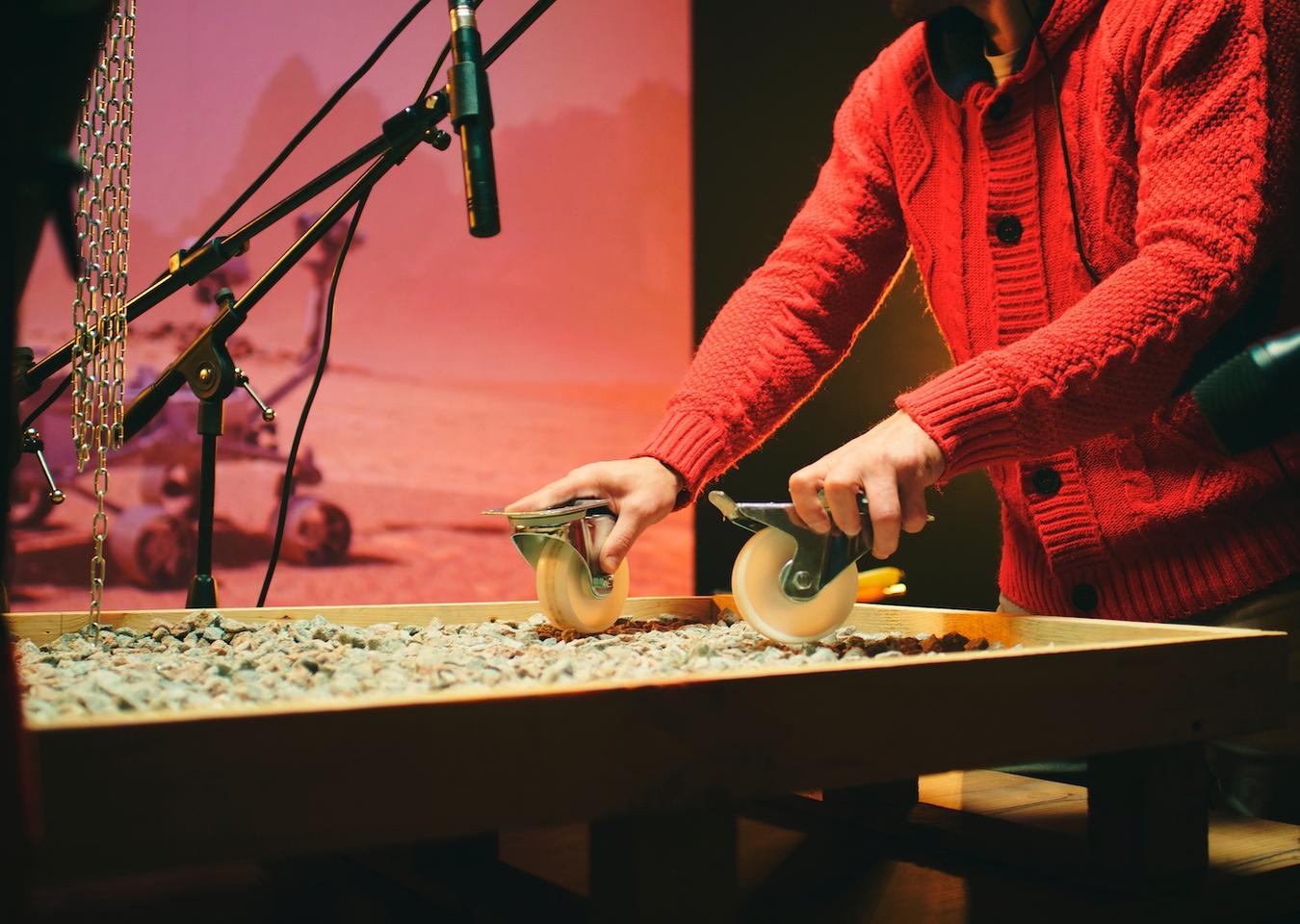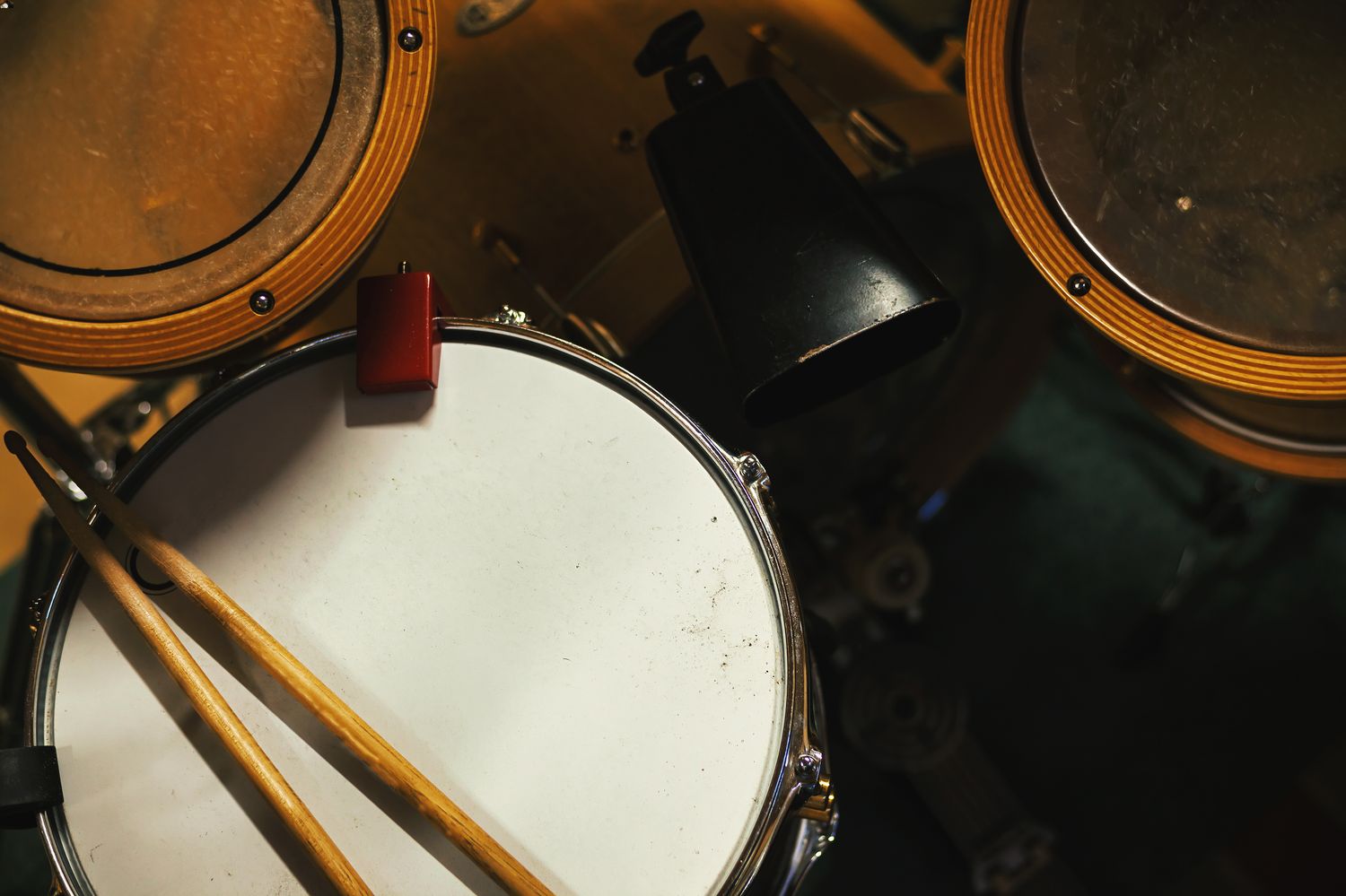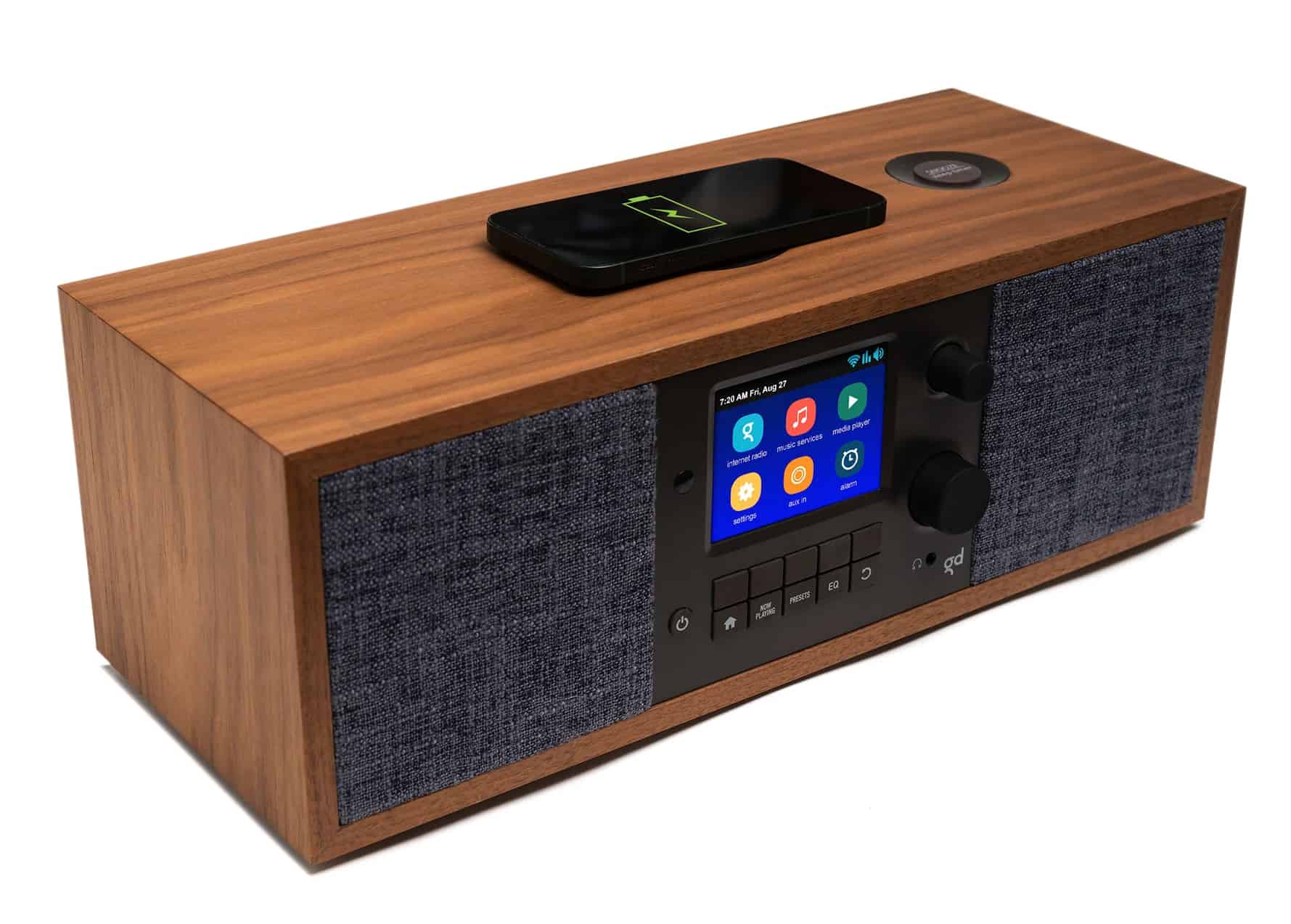Home>Instruments>Drums>How To Make Drums Sound Lo-Fi


Drums
How To Make Drums Sound Lo-Fi
Published: February 8, 2024
Learn how to achieve a lo-fi sound for your drums with these expert tips. Transform your drum tracks and add vintage vibes today!
(Many of the links in this article redirect to a specific reviewed product. Your purchase of these products through affiliate links helps to generate commission for AudioLover.com, at no extra cost. Learn more)
Table of Contents
Introduction
Introduction
Drums are the heartbeat of music, providing rhythm, energy, and groove to any composition. Whether it’s the driving force in a rock anthem or the backbone of a jazz ensemble, the sound of drums can make or break a song. In recent years, the lo-fi aesthetic has surged in popularity, with its gritty, raw, and nostalgic sound capturing the hearts of music enthusiasts worldwide. Lo-fi, short for “low fidelity,” embraces imperfections, character, and warmth, offering a vintage charm that resonates with listeners.
Creating a lo-fi sound with drums involves a combination of techniques, equipment choices, and creative processing. It’s a journey that invites musicians and producers to explore the art of imperfection, embracing the quirks and idiosyncrasies that give lo-fi music its distinct appeal. From choosing the right equipment to experimenting with mic placement and processing, every step plays a crucial role in shaping the lo-fi drum sound.
This comprehensive guide delves into the world of lo-fi drum production, offering insights, tips, and techniques to help you infuse your drum tracks with that coveted vintage vibe. Whether you’re a seasoned producer looking to expand your sonic palette or a budding musician eager to capture the essence of lo-fi, this article will equip you with the knowledge and inspiration to make your drums sound delightfully lo-fi.
Understanding Lo-Fi Sound
At its core, lo-fi sound embraces a raw and unpolished sonic character, reminiscent of analog recordings from decades past. It celebrates the imperfections and idiosyncrasies that often arise during the recording and production process, offering a sense of nostalgia and warmth to the listener. The lo-fi aesthetic is characterized by its gritty textures, subtle vinyl crackles, and a vintage tonal quality that transports the audience to a different era.
One of the defining features of lo-fi music is its ability to evoke a sense of intimacy and authenticity. By incorporating elements of imperfection, such as subtle variations in timing, tonal irregularities, and ambient room noise, lo-fi productions possess a unique charm that sets them apart from their pristine, high-fidelity counterparts. This deliberate departure from clinical perfection allows for a more human and emotive connection with the music, inviting listeners to immerse themselves in its organic allure.
Furthermore, lo-fi sound often draws inspiration from the sonic artifacts associated with vintage recording equipment and techniques. From the warmth of analog tape saturation to the distinct tonal coloration of classic microphones, lo-fi production seeks to capture the sonic essence of a bygone era. This pursuit of nostalgia and character is a hallmark of the lo-fi movement, resonating with audiences who yearn for the evocative and imperfect beauty of yesteryear.
Understanding the essence of lo-fi sound is pivotal in crafting compelling drum tracks that embody its distinct qualities. By embracing the imperfections, character, and vintage charm that define lo-fi music, producers and musicians can breathe life into their drum productions, infusing them with a timeless allure that transcends the constraints of modern sonic perfection.
Choosing the Right Equipment
When venturing into the realm of lo-fi drum production, selecting the appropriate equipment forms the foundation for achieving an authentic and vintage sound. The choice of gear significantly influences the tonal characteristics and sonic textures captured during the recording process. Here are key considerations when choosing equipment for lo-fi drum production:
- Vintage Drum Kits: Opting for vintage or vintage-inspired drum kits can impart a distinct lo-fi flavor to your recordings. Drum sets from the 1960s and 1970s often feature warm, resonant tones and unique sonic quirks that align with the lo-fi aesthetic. Additionally, experimenting with unconventional percussion instruments, such as old and quirky snare drums or cymbals with patina, can introduce captivating sonic nuances.
- Microphones with Character: Embracing microphones known for their coloration and character can contribute to the vintage vibe of lo-fi drum recordings. Dynamic microphones renowned for their midrange warmth, ribbon microphones prized for their smooth and intimate sound, and unconventional microphones prized for their idiosyncratic tonal qualities can all play a role in capturing the desired lo-fi sonic signature.
- Analog Tape Machines and Saturation: Incorporating analog tape machines or tape saturation plugins in the recording chain can infuse drums with the warmth, subtle distortion, and harmonic richness associated with vintage recordings. This introduces a touch of lo-fi charm, adding depth and character to the drum tracks.
- Drum Machines and Samplers: Utilizing classic drum machines and samplers renowned for their lo-fi character can expand the sonic palette of your productions. These instruments offer a wide array of vintage drum sounds, including crunchy snares, warm kicks, and gritty percussion, ideal for crafting lo-fi rhythms.
By carefully selecting equipment that aligns with the sonic ethos of lo-fi production, you can lay a strong foundation for capturing the nostalgic, character-rich qualities that define the genre. The right gear not only shapes the tonal palette of your drum recordings but also imbues them with a timeless allure that resonates with the essence of lo-fi music.
Tuning Your Drums
One of the fundamental aspects of achieving an authentic and captivating lo-fi drum sound lies in the meticulous tuning of the drum kit. Tuning not only influences the tonal characteristics of the drums but also plays a pivotal role in shaping the overall vibe and resonance of the recordings. Here are essential considerations for tuning your drums in the context of lo-fi production:
- Embracing Imperfection: Lo-fi music celebrates imperfection, and this ethos extends to the tuning of drums. Rather than striving for clinical precision, consider embracing subtle pitch variations and idiosyncrasies across the drum kit. This approach adds a human touch and organic character to the sound, aligning with the lo-fi aesthetic.
- Warm and Resonant Tones: Aim for warm, resonant drum tones that evoke a vintage and inviting quality. Experiment with tuning the drums to lower pitches, allowing them to exude a deep and rich character. This contributes to the nostalgic allure inherent in lo-fi productions.
- Exploring Unconventional Tunings: Lo-fi drum production encourages exploration and experimentation. Consider unconventional tunings that yield unique and idiosyncratic drum sounds. This could involve tuning the snare drum to an unusually low or high pitch, creating a distinctive sonic fingerprint that enhances the lo-fi charm of the recordings.
- Room Ambience and Tuning Interaction: Recognize the interplay between drum tuning and room acoustics. The tuning of drums can influence how they interact with the surrounding space, impacting the ambient characteristics of the recordings. Embrace the natural resonances and room ambience, allowing them to become integral components of the lo-fi drum sound.
By approaching drum tuning as a creative and expressive endeavor, producers and musicians can infuse their recordings with the evocative and character-rich qualities synonymous with lo-fi music. Embracing imperfection, pursuing warm and resonant tones, and exploring unconventional tunings all contribute to the distinctive allure of lo-fi drum productions, inviting listeners into a world of vintage charm and sonic nostalgia.
Mic Placement
Effective mic placement is a critical element in capturing the nuanced and character-rich qualities of lo-fi drum recordings. The positioning of microphones around the drum kit significantly influences the tonal balance, spatial depth, and sonic textures captured during the recording process. In the realm of lo-fi production, thoughtful mic placement can elevate the vintage charm and organic allure of drum tracks. Here are essential considerations for mic placement in the context of lo-fi drum production:
- Capturing Character and Quirk: Embrace unconventional mic placement techniques to capture the idiosyncratic qualities of the drum kit. Experiment with offbeat placements that accentuate the unique tonal characteristics of individual drums and cymbals. This approach adds a touch of personality and quirkiness to the recordings, aligning with the lo-fi ethos.
- Ambient Mic Techniques: Incorporate ambient mic placements to capture the natural reverberations and room acoustics. Positioning microphones at a distance from the drum kit or strategically placing them in reflective spaces can introduce a sense of depth and immersive ambiance to the recordings, enhancing the vintage vibe of lo-fi productions.
- Close Miking for Intimacy: Utilize close miking techniques to capture the intimate and detailed sonic characteristics of individual drums and percussion elements. Placing microphones in close proximity to the drum heads and cymbals allows for the capture of nuanced textures and subtle tonal variations, contributing to the organic and tactile nature of lo-fi drum tracks.
- Experimenting with Mono and Stereo Configurations: Explore the sonic possibilities offered by mono and stereo mic configurations. Mono miking can yield a focused and direct sound, while stereo techniques, such as coincident pair or spaced pair setups, can introduce spaciousness and dimension to the drum recordings, enriching the lo-fi sonic palette.
By embracing creative and unconventional mic placement strategies, producers and engineers can imbue their lo-fi drum recordings with a captivating blend of intimacy, character, and spatial depth. The deliberate exploration of mic placement techniques not only shapes the sonic identity of the drum tracks but also contributes to the evocative and nostalgic allure that defines the world of lo-fi music.
Room Acoustics
When pursuing the distinct lo-fi sound in drum production, the influence of room acoustics cannot be understated. The sonic characteristics of the recording space play a pivotal role in shaping the ambience, spatial depth, and overall vibe of drum tracks. In the context of lo-fi music, leveraging the unique qualities of room acoustics can enhance the vintage charm and organic allure of drum recordings. Here are essential considerations for harnessing room acoustics in lo-fi drum production:
- Natural Reverberations: Embrace the natural reverberations and reflections present in the recording environment. Rather than aiming for a clinically dry sound, allow the room’s acoustics to impart a sense of depth and spatial immersion to the drum recordings. The subtle ambience adds a touch of nostalgia and character, aligning with the lo-fi aesthetic.
- Embracing Imperfections: Acknowledge and embrace the imperfections and idiosyncrasies of the room’s acoustics. Whether it’s subtle creaks, ambient hums, or resonant artifacts, these quirks contribute to the organic and character-rich qualities inherent in lo-fi productions. They add a human touch and a sense of authenticity to the drum tracks.
- Reflective Surfaces and Textures: Identify and leverage the acoustically reflective surfaces within the recording space. Strategically positioning the drum kit in areas with unique sonic textures, such as exposed brick walls or wooden surfaces, can impart distinctive tonal colorations and spatial nuances to the recordings, enriching the lo-fi sonic palette.
- Striking a Balance: Find a balance between harnessing the room’s natural ambience and mitigating unwanted sonic artifacts. While embracing the vintage charm of room acoustics, it’s essential to exercise judicious control over excessive resonances or undesirable background noise, ensuring that the room’s influence enhances the lo-fi character of the drum recordings.
By conscientiously embracing the sonic footprint of the recording environment, producers and engineers can infuse their lo-fi drum tracks with a captivating blend of vintage ambience, character, and spatial depth. Leveraging the inherent imperfections and unique textures of room acoustics not only shapes the sonic identity of the recordings but also contributes to the evocative and nostalgic allure that defines the world of lo-fi music.
Processing and Effects
Delving into the realm of lo-fi drum production involves the strategic application of processing and effects to imbue drum tracks with the vintage charm and character synonymous with the genre. From subtle tonal shaping to creative manipulation, the judicious use of processing and effects plays a pivotal role in shaping the sonic identity of lo-fi drum recordings. Here are essential techniques and considerations for processing and effects in the context of lo-fi production:
- Analog Saturation and Distortion: Introduce analog saturation and subtle distortion to impart warmth, harmonic richness, and a touch of grit to the drum tracks. Emulating the sonic characteristics of vintage tape machines or analog outboard gear can infuse the recordings with a nostalgic allure, enhancing the lo-fi aesthetic.
- Vinyl Emulation and Warble: Incorporate vinyl emulation plugins or tape warble effects to introduce subtle pitch fluctuations and vintage vinyl crackles to the drum tracks. These sonic artifacts add a layer of authenticity and nostalgic charm, evoking the sonic textures associated with classic lo-fi recordings.
- Dynamic Processing and Compression: Apply gentle dynamic processing and compression to subtly tame transients and impart a sense of cohesion to the drum tracks. Embracing the nuances of vintage compressor emulations or opto-style compression can enhance the tactile and organic nature of the recordings, aligning with the lo-fi sonic ethos.
- Lo-Fi Filtering and EQ Sculpting: Experiment with lo-fi filtering techniques and creative EQ sculpting to shape the tonal characteristics of individual drum elements. Introduce subtle frequency shaping, gentle filtering, and unconventional EQ curves to imbue the recordings with a vintage tonal coloration and character.
By judiciously applying processing and effects, producers and engineers can elevate their lo-fi drum recordings, infusing them with a captivating blend of warmth, character, and vintage allure. The deliberate incorporation of analog saturation, vinyl emulation, dynamic processing, and creative EQ sculpting contributes to the evocative and nostalgic qualities that define the world of lo-fi music.
Conclusion
Embarking on the journey of crafting lo-fi drum productions unveils a world of sonic exploration, vintage charm, and organic allure. From the deliberate embrace of imperfection to the strategic utilization of equipment and processing techniques, the art of lo-fi drum production invites musicians and producers to delve into the timeless realm of character-rich, nostalgic soundscapes. As we conclude this comprehensive guide, it’s essential to reflect on the key takeaways and the enduring allure of lo-fi drum production.
At the heart of lo-fi sound lies a celebration of imperfections, idiosyncrasies, and vintage character. Embracing the quirks and nuances that define lo-fi music allows for a more human and emotive connection with the sonic landscape, inviting listeners to immerse themselves in its organic charm. The deliberate departure from clinical perfection fosters a sense of intimacy and authenticity, resonating with audiences who seek the evocative and imperfect beauty of yesteryear.
Choosing the right equipment, tuning drums for warmth and resonance, exploring creative mic placement, harnessing the unique qualities of room acoustics, and applying strategic processing and effects collectively contribute to the captivating allure of lo-fi drum productions. Each step in the production process serves as a brushstroke, painting a sonic canvas rich in vintage character and timeless appeal.
As you venture into the realm of lo-fi drum production, remember that the pursuit of imperfection and vintage charm is a nuanced and personal endeavor. It invites you to infuse your recordings with a sense of nostalgia, warmth, and character, allowing the sonic imperfections to become endearing features rather than flaws.
Ultimately, the world of lo-fi drum production offers a gateway to a sonic realm where imperfections are celebrated, vintage character is revered, and the timeless allure of nostalgia beckons. Whether you’re crafting drum tracks for a lo-fi hip-hop beat, an indie folk ballad, or an experimental electronic composition, the principles and techniques explored in this guide serve as a compass, guiding you toward the captivating and evocative world of lo-fi drum production.











